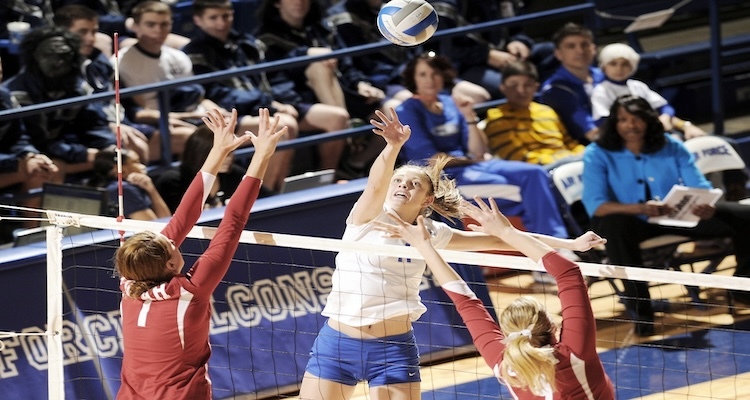
Volleyball players often grapple with injuries like rotator cuff and ACL injuries, making physiotherapy an essential intervention for injury prevention and muscle strengthening. Trying physiotherapy can aid in both recovery from surgery and in fortifying muscles to ward off future injuries, enhancing volleyball players’ resilience and performance on the court.
Physiotherapy treatment techniques include stretching, strength training, and maintaining proper nutrition, which together form a comprehensive approach to sports injury prevention and recovery. These evidence-based strategies underscore the benefits of trying physiotherapy for volleyball players, offering a pathway to improved performance and reduced injury risk.
Understanding the biomechanics of volleyball is crucial for enhancing performance and preventing injuries. Biomechanics studies how forces and movements affect the human body, especially during sports activities. For volleyball players, this means analyzing how they jump, hit, and block, which are critical actions that require optimal efficiency, power, and accuracy. Key biomechanical factors include force production and absorption, kinetic chain, joint angles, body alignment, and movement patterns. By mastering these elements, players can execute their skills more effectively and safely.
Core stability, or lumbar-pelvic stability, plays a pivotal role in volleyball. It is a dynamic process that controls stability during functional conditions, allowing for controlled movement of the trunk in various situations. Exercises aimed at enhancing core stability can significantly improve balance, muscular endurance, and the strength of both upper and lower extremities, which are crucial for volleyball players. These exercises not only enhance performance but also play a vital role in reducing the risk of injuries by improving the kinetic and kinematic variables of the trunk and lower limbs.
Physiotherapy is instrumental in helping volleyball players understand and improve their body mechanics. By assessing and targeting the injured areas, physiotherapists can begin a treatment regimen that focuses on pain relief, increased range of motion, and enhanced overall performance. They also provide crucial insights into how small changes in swing, stance, and grip can optimize energy usage and prevent over-extension, which is essential for both injury prevention and performance enhancement in volleyball.
A multifaceted approach to injury prevention in volleyball players includes adopting a comprehensive training program and using appropriate equipment. Full-body strength training, functional movement exercises, and specific techniques for jumping and landing are crucial. Utilizing gear like knee pads, shoes with strong ankle support, and defensive pants can significantly reduce the risk of injuries. Additionally, ensuring proper warm-up and cool-down routines, stretching before and after sessions, and maintaining hydration are vital practices.
Safety on the playing field is paramount. Coaches and players should ensure that the playing environment is safe by maintaining 23 feet of overhead clearance and securing the playing surface from hazards like wires or sharp objects. It is also important to apply sun protection and use sun-protective clothing when playing outdoors to prevent sun-related injuries. Effective communication among team members, such as calling for the ball, can prevent collisions and further enhance safety during the game.
Physiotherapy plays a pivotal role in both preventing and treating injuries specific to volleyball. Techniques like the Eagle Arms Stretch and calf raises help strengthen critical areas prone to injury, such as shoulders and ankles.
Interval training is pivotal for volleyball players, mimicking game scenarios with cutting and directional changes to enhance gameplay readiness. Incorporating high-intensity interval training (HIIT) can significantly boost stamina and prepare muscles for volleyball's intense activities such as jumping and sprinting. These training modalities not only improve physical agility but also condition the body to handle the rigorous demands of the sport.
Strength training is another cornerstone for volleyball athletes, focusing on core and leg muscles to augment balance and jump performance. Exercises like squats, planks, and lunges are beneficial for strengthening the lower body and core, crucial for maintaining stability and power during play. Additionally, training the rotator cuff and scapular muscles is essential to prevent the common overuse injuries in volleyball, utilizing resistance bands and free weights to fortify these areas.
Physiotherapy offers tailored treatment plans that are integral to a volleyball player's training regimen. Regular sessions can enhance muscle flexibility, improve range of motion, and boost overall agility, which are vital for optimal performance in serving and spiking. Physiotherapists also focus on core stability exercises that not only improve balance but also enhance proprioception and the kinematic variables essential for volleyball. By integrating physiotherapy into their routine, players can achieve a higher level of performance while minimizing the risk of injuries.
Through the exploration of physiotherapy's significant role in volleyball, it has become evident how vital it is for injury prevention, rehabilitation, and performance enhancement. By understanding the biomechanics of the sport, employing comprehensive training techniques, and leveraging physiotherapy, players can markedly improve their gameplay and bodily health. These practices not only foster injury resilience but also optimize performance by ensuring athletes' bodies are well-prepared and maintained for the physical demands of volleyball. It's clear that incorporating physiotherapy into athletes' regimens offers a holistic approach to reaching their peak potential on the court.
As we've seen, physiotherapy's reach extends beyond mere injury recovery; it's instrumental in teaching players about body mechanics, enhancing core stability, and even aiding in the strategic application of strength and conditioning practices specific to volleyball. The significance of these components cannot be understated, as they collectively contribute to a volleyball player's longevity and success in the sport. By adhering to the outlined strategies and recognizing the invaluable role of physiotherapy, volleyball players can achieve greater heights, underscored by improved health, performance, and a deeper understanding of their physical capabilities.
You should always consult a qualified healthcare professional about any injury prevention and/or injury management strategies. If you want to find a specialist to consult do search our easy to use directory to find a sports physiotherapist near you.
